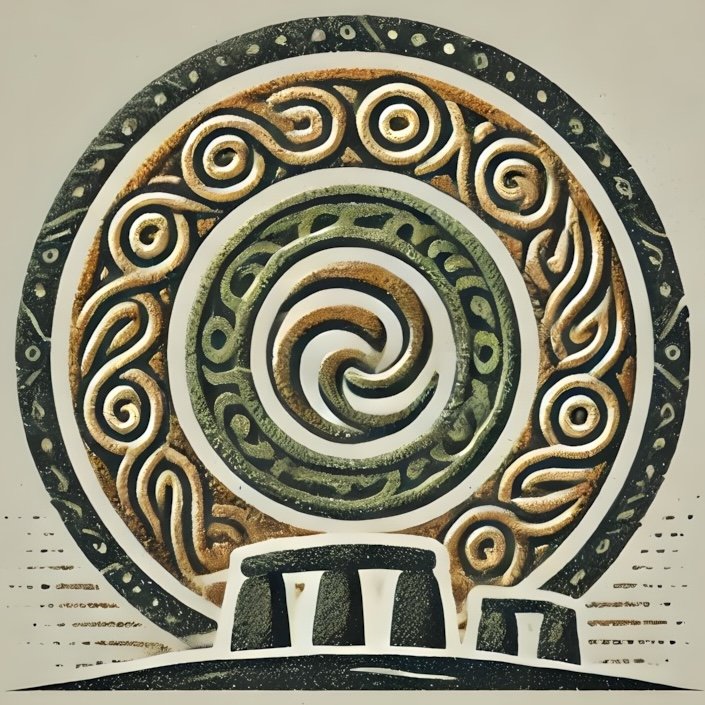Hillforts and Royal Centers
Introduction to Hillforts and Royal Centers
Hillforts and royal centers are among the most intriguing remnants of Ireland’s prehistoric landscape, serving as powerful symbols of social organization, political power, and spiritual significance. These monumental sites, often strategically located on elevated ground, reflect the complex interplay between the natural environment and human activity. They were not merely military strongholds or residences for the elite; they were vibrant centers of community life, trade, and ritual, deeply intertwined with the myths and legends that have shaped Irish identity.
In this exploration of hillforts and royal centers, we will journey through time, examining their historical context, the stories they tell, and the key sites that invite us to connect with Ireland’s rich past. From the legendary Emain Macha to the enigmatic Rathcroghan and the sacred Uisneach, these locations offer a window into the lives of our ancestors and the gods they revered.
Historical Context
The origins of hillforts in Ireland can be traced back to the Iron Age, around 500 BCE, when the landscape was marked by a shift from small, dispersed settlements to larger, fortified communities. These structures were often characterized by earthen banks and ditches, providing protection against potential invaders. As society evolved, so too did the functions of these sites. By the early medieval period, hillforts had transformed into royal centers, serving as administrative and ceremonial hubs for local kings and chieftains.
The significance of these sites is further amplified by the rich tapestry of Irish mythology and folklore. Many hillforts are associated with legendary figures and events, intertwining history and myth in a way that continues to captivate the imagination. The stories of gods, heroes, and battles resonate through the ages, lending a sense of sacredness to these landscapes.
Emain Macha
One of the most celebrated hillforts in Ireland is Emain Macha, located near the modern town of Armagh in Northern Ireland. This site is steeped in myth and history, often identified as the seat of the legendary Ulster kings and the backdrop for tales of the heroic Cú Chulainn. According to the “Táin Bó Cúailnge,” a central narrative in the Ulster Cycle, Emain Macha was not only a royal residence but also a place of great cultural significance, where warriors were trained and feasts were held.
Archaeological excavations at Emain Macha have revealed a complex landscape of circular enclosures, large wooden structures, and evidence of ritual activity. The site is believed to have been a vibrant center of power and influence, where the political and spiritual realms intersected. Visitors to Emain Macha can explore the surrounding landscape, which is dotted with ancient burial mounds and other features that evoke the myths of the past.
Rathcroghan
Rathcroghan, located in County Roscommon, is another key site that exemplifies the significance of hillforts and royal centers in Irish prehistory. This complex landscape is home to a series of earthworks, including the impressive Rathcroghan Mound, which is thought to have been the royal seat of the Connachta dynasty. The site is intimately connected to the mythological figure of Queen Medb, a powerful warrior queen whose exploits are chronicled in the “Táin Bó Cúailnge.”
Rathcroghan is not just a single fort but a sprawling landscape of archaeological features, including burial mounds, ritual sites, and ancient pathways. The site is imbued with a sense of mystery and reverence, as it is believed to be the gateway to the Otherworld, a theme that resonates throughout Irish mythology. Visitors can explore the various mounds and enclosures, each telling a story of its own, while also engaging with the rich folklore that surrounds the site.
Uisneach
Uisneach, often regarded as the spiritual heart of Ireland, is a hillfort located in County Westmeath. This site holds a unique position in both the physical and mythological landscape of Ireland, as it is said to be the meeting point of the five provinces: Ulster, Leinster, Munster, Connacht, and Meath. Uisneach is steeped in myth, particularly the tale of the goddess Ériu, from whom Ireland derives its name.
Archaeological evidence suggests that Uisneach was a significant ceremonial site, with features such as the Ail na Mireann, a standing stone that marks the ancient assembly place. The site is also associated with the festival of Bealtaine, a celebration of fertility and the coming of summer, further emphasizing its role as a center of ritual and community gathering. Visitors to Uisneach can explore its rich landscape, which includes ancient burial mounds, stone circles, and traces of past habitation, all while reflecting on the deep connections between the land, its people, and their beliefs.
Comparative Analysis
When examining hillforts and royal centers across Ireland, it becomes evident that while each site possesses unique characteristics, they share common themes of power, spirituality, and community. Emain Macha, Rathcroghan, and Uisneach exemplify the multifaceted nature of these sites, each serving as a focal point for political authority and religious practice.
In comparing these sites, one can observe variations in their architectural features, such as the size and complexity of the enclosures, as well as their geographical settings. Emain Macha, with its association with the Ulster kings, emphasizes a warrior culture, while Rathcroghan’s ties to Queen Medb highlight the role of women in leadership and mythology. Uisneach, on the other hand, serves as a reminder of the interconnectedness of the various provinces and the importance of communal identity.
Moreover, the myths surrounding these sites often reflect the values and beliefs of the societies that constructed them. The stories of gods, heroes, and legendary battles serve not only as entertainment but also as moral lessons and cultural touchstones that continue to resonate in contemporary Irish society.
The Legacy of Hillforts and Royal Centers
The legacy of hillforts and royal centers is not merely confined to the past; they continue to shape the cultural landscape of Ireland today. These sites are not only archaeological treasures but also places of pilgrimage and reflection for those seeking to connect with their heritage. They serve as reminders of the rich tapestry of history and mythology that defines the Irish experience.
As visitors explore these sacred landscapes, they are invited to engage with the stories of their ancestors, to walk in the footsteps of kings and queens, and to contemplate the enduring power of the land and its legends. Whether standing atop the mounds of Emain Macha, wandering through the ancient pathways of Rathcroghan, or gazing upon the sacred stones of Uisneach, one cannot help but feel a profound connection to the past and the timeless narratives that continue to shape the identity of Ireland.
In this chapter of sacred landscapes and the gods of Ireland, hillforts and royal centers stand as monumental testaments to the resilience of culture, the power of myth, and the enduring spirit of a people deeply rooted in their land.
meta –

